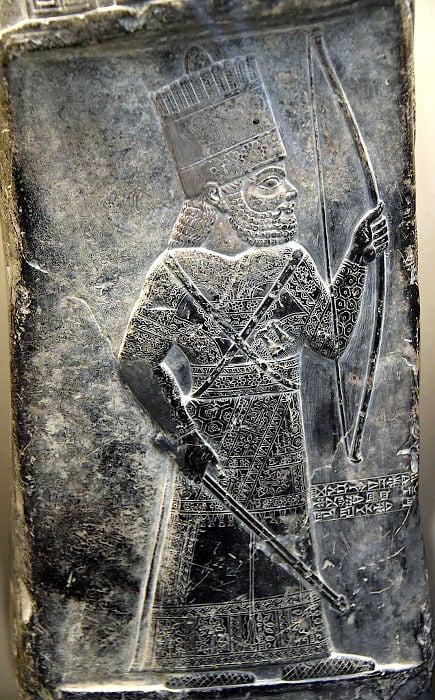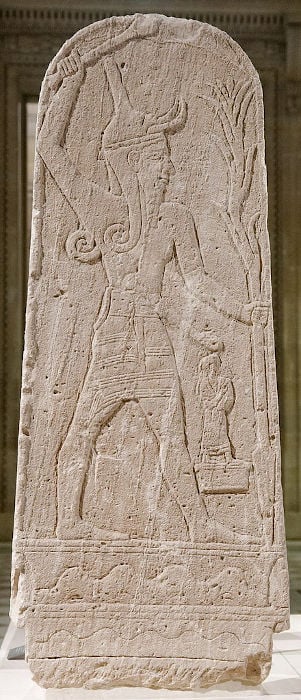
The Rise of Monotheism in the Ancient Near East
For centuries, our distant ancestors believed in a plethora of gods and goddesses, having a close relationship with the nature around them and personifying many natural occurrences. But there were some civilizations that moved past that polytheistic belief. They believed that there is only one God - a singular deity above all else. This was known as monotheism, and the Near East is one of its earliest cradles. So, what compelled those ancient cultures to step away from the polytheistic peoples that surrounded them? How did they structure their lives to be centered on a nuanced belief that there is a singular deity?
Near East, The Cradle of Change
The ancient Near East, often regarded as the cradle of civilization, witnessed the development of some of the most influential and enduring religious systems in human history. It was here that the earliest known examples of polytheistic worship - where societies believed in and venerated multiple gods - flourished. However, among these complex belief systems emerged a revolutionary idea: monotheism, the belief in a single, all-powerful deity. This transition from polytheism to monotheism did not happen in a vacuum. Instead, it was the product of cultural, political, and theological shifts over millennia. The rise of monotheism, particularly through the faith of the Israelites and later reinforced by Zoroastrianism and early Christianity, altered the religious landscape of the Near East and set the stage for the Abrahamic religions that dominate the world today.
- Early Jewish Monotheism and Egyptian Atenism – One And The Same?
- Understanding the Monotheism of Akhenaten: Solar Disc Thrust into Eternal Darkness–Part II
Of course, understanding the rise of monotheism requires an exploration of the socio-political structures of the ancient Near East, the evolution of religious thought within specific communities, and the broader regional interactions that helped shape these beliefs. From the initial inklings of monotheistic concepts in ancient Mesopotamian and Egyptian theology to the development of ethical monotheism in ancient Israel, the journey was complex, multifaceted, and filled with both continuity and transformation.

A depiction of Marduk. (Osama Shuukir Muhammed Amin FRCP(Glasg) / CC BY-SA 4.0)
Before monotheism took hold, polytheism was the dominant religious framework in the ancient Near East. Cities like Ur, Babylon, and Thebes thrived on the worship of multiple deities who were believed to control various aspects of the natural and supernatural world. These gods and goddesses often had specific domains: Enlil was the god of air in Mesopotamia, while Marduk became the chief deity of Babylon. Similarly, in Egypt, a pantheon of gods, including Amun, Ra, and Osiris, oversaw life, death, and the cosmos. This polytheistic framework was deeply embedded in both the political and social fabric of these ancient societies. Kings often claimed divine legitimacy through their connection to a particular god, reinforcing their rule and the religious hierarchy.
From Gods to God
The gods of polytheistic systems were anthropomorphic, possessing human-like traits and emotions. They could be vengeful, kind, capricious, or benevolent. Temples were built to honor these deities, and priests performed rituals to ensure that the gods were appeased and that they continued to provide prosperity and protection. The polytheistic worldview also allowed for the blending of different gods into one another, known as syncretism. For example, the Egyptian god Amun was often merged with Ra, creating a combined deity, Amun-Ra.
However, within this polytheistic framework, there were signs of a shift in religious consciousness. Some scholars suggest that ancient Sumerian hymns and prayers, especially those directed toward gods like Enlil or Inanna, demonstrate a growing tendency to emphasize the singularity and supremacy of one god over others in specific contexts. While not outright monotheistic, these tendencies suggest the early conceptual seeds that would later develop into monotheism.
One of the most critical developments in the rise of monotheism occurred among the Israelites. Emerging from the broader Canaanite culture, the ancient Israelites' religious practices were initially polytheistic, as demonstrated by archeological evidence of household idols and references to multiple gods in early biblical texts. However, over time, the worship of Yahweh, originally a storm and warrior deity, grew in prominence and exclusivity. This transition is often dated to the period between the 12th and 6th centuries BC, a time when the Israelites were engaged in various struggles for survival and identity.





